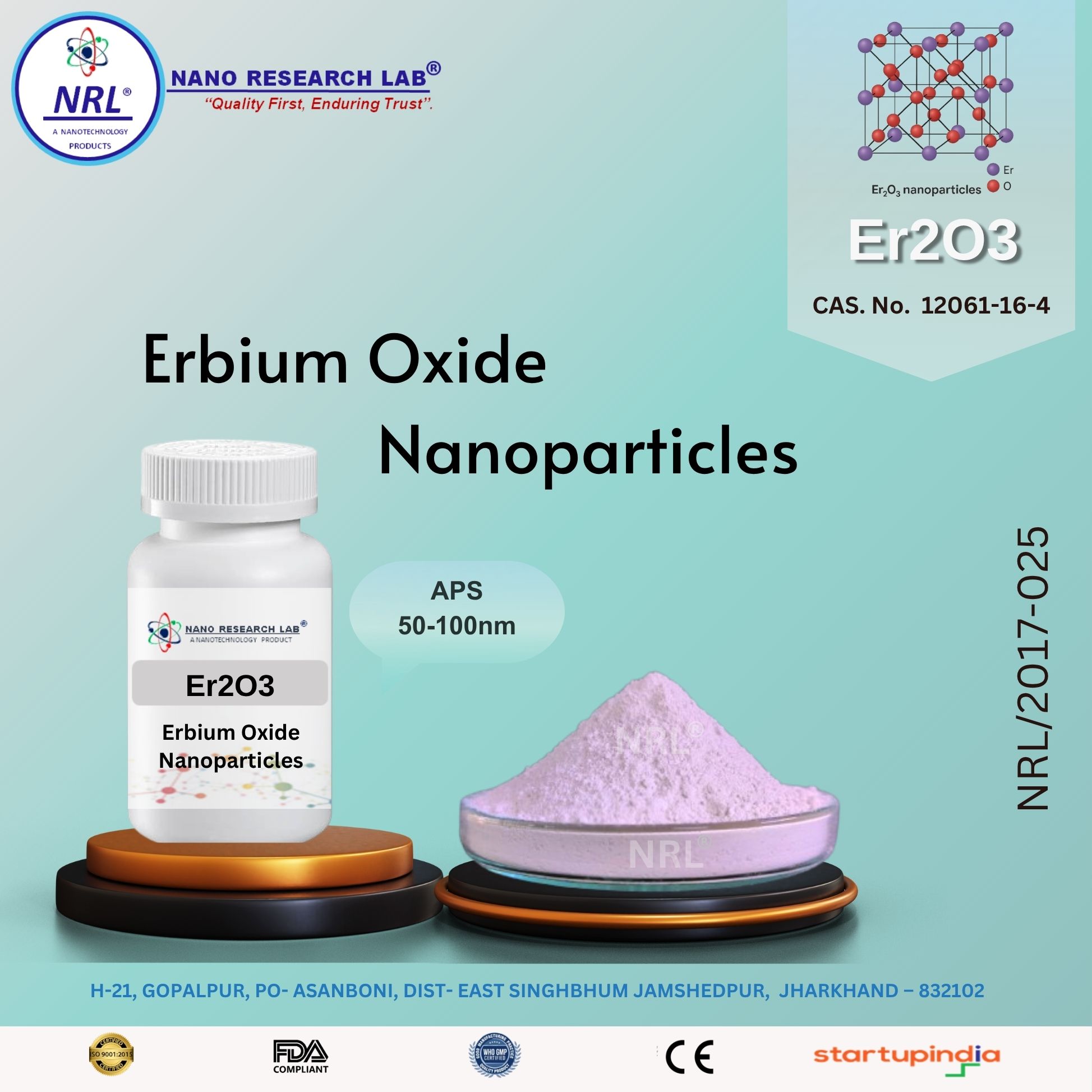
Erbium Oxide Nanoparticles/Nanopowder (Er2O3, 50-100nm, purity 99.5%)
₹1475.00
🧪 Erbium Oxide Nanoparticles / Nanopowder (Er₂O₃)
Particle Size: 50–100 nm
Purity: 99.5%
⚙️ Technical Specifications
Property | Specification |
|---|---|
Material Name | Erbium Oxide Nanoparticles |
Chemical Formula | Er₂O₃ |
Purity | 99.5% |
Particle Size | 50–100 nm |
Appearance / Color | Pink / light reddish fine powder |
Crystal Structure | Cubic (C-type rare-earth oxide) |
Surface Area | High nanoscale surface area |
Density | ~8.64 g/cm³ |
Melting Point | 2,344 °C |
Boiling Point | 3,290 °C |
Solubility | Insoluble in water, soluble in acids |
Storage Conditions | Store in dry, airtight container, away from moisture, acids, and bases |
🌟 Key Features
High-purity (99.5%) Er₂O₃ nanoparticles
Nanoscale size (50–100 nm) ensures high surface area and reactivity
Excellent thermal and chemical stability
Pink/light reddish powder, easy to handle and process
Suitable for high-tech, optical, and advanced material applications
🔬 Applications (Detailed)
Optics & Photonics
Used in erbium-doped fiber lasers and optical amplifiers for telecommunications.
Enhances signal strength in fiber optic networks.
Active medium for infrared and visible light lasers due to sharp emission lines.
Ceramics & Glass
Dopant in specialty glasses providing pink/reddish coloration.
Improves mechanical, thermal, and optical properties of ceramics and glass.
Useful in phosphor materials for displays, lighting, and optical devices.
Electronics & Semiconductors
Incorporated into sensors, thin films, and solid-state devices.
Enhances UV and visible light response in optoelectronic devices.
Applied in transparent conductive coatings and advanced electronic components.
Magnetic & Rare-Earth Materials
Used in high-performance magnetic materials and rare-earth alloys.
Improves magnetic stability, thermal resistance, and performance in specialized applications.
Energy & Photonics Research
Ideal for quantum dots, upconversion nanoparticles, and luminescent materials.
Used in photothermal and photocatalytic applications due to high surface reactivity.
Enables synthesis of advanced nanomaterials for optical, electronic, and photonic research.
Biomedical & Imaging Applications (Research)
Potential use in bioimaging and photodynamic therapy due to near-infrared emission.
Can be functionalized for targeted drug delivery or as contrast agents in experimental diagnostics.
⚠️ Handling & Storage
Store in a cool, dry, airtight container, away from moisture, acids, and bases
Handle with gloves, protective eyewear, and lab coat
Avoid inhalation of fine powder; use in a well-ventilated area or fume hood
Prevent contamination with other chemicals or metals
